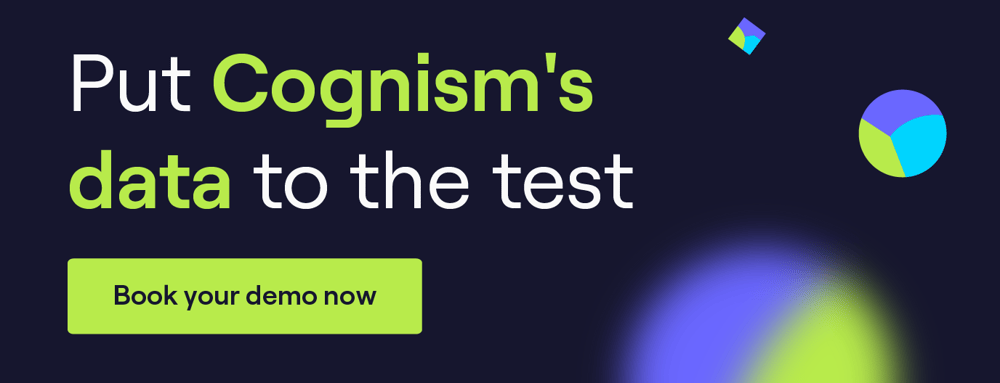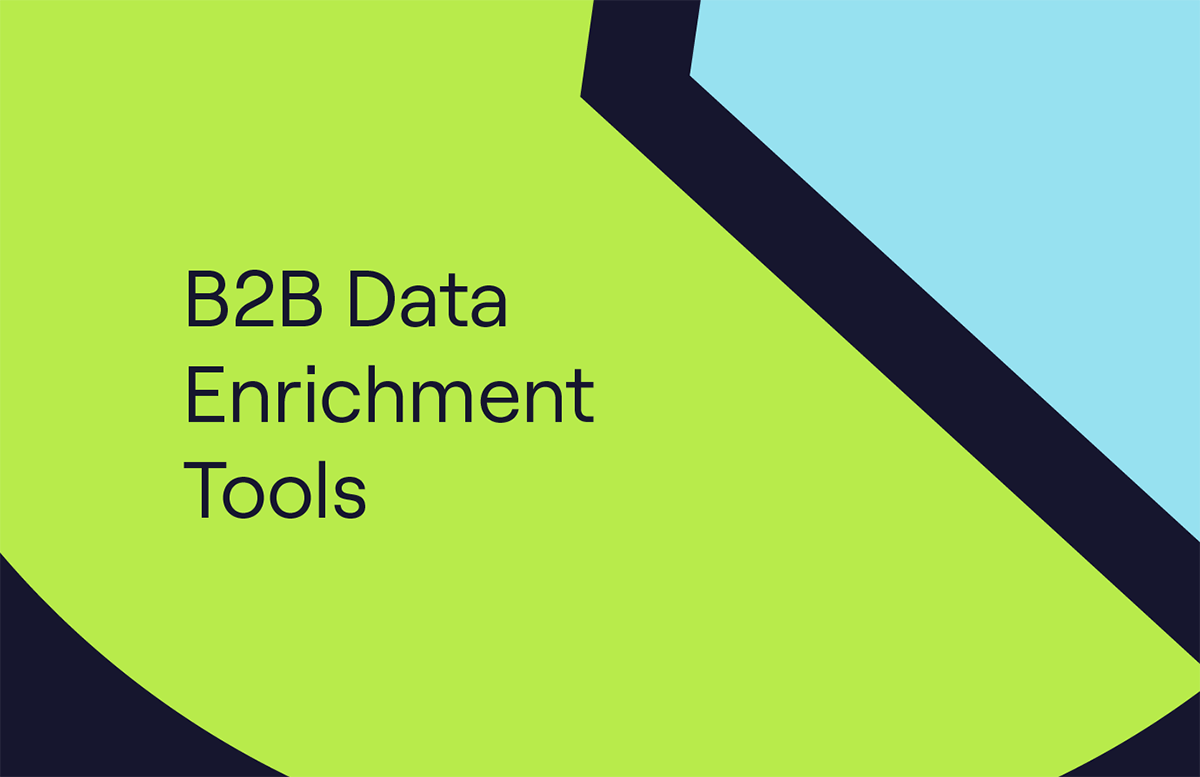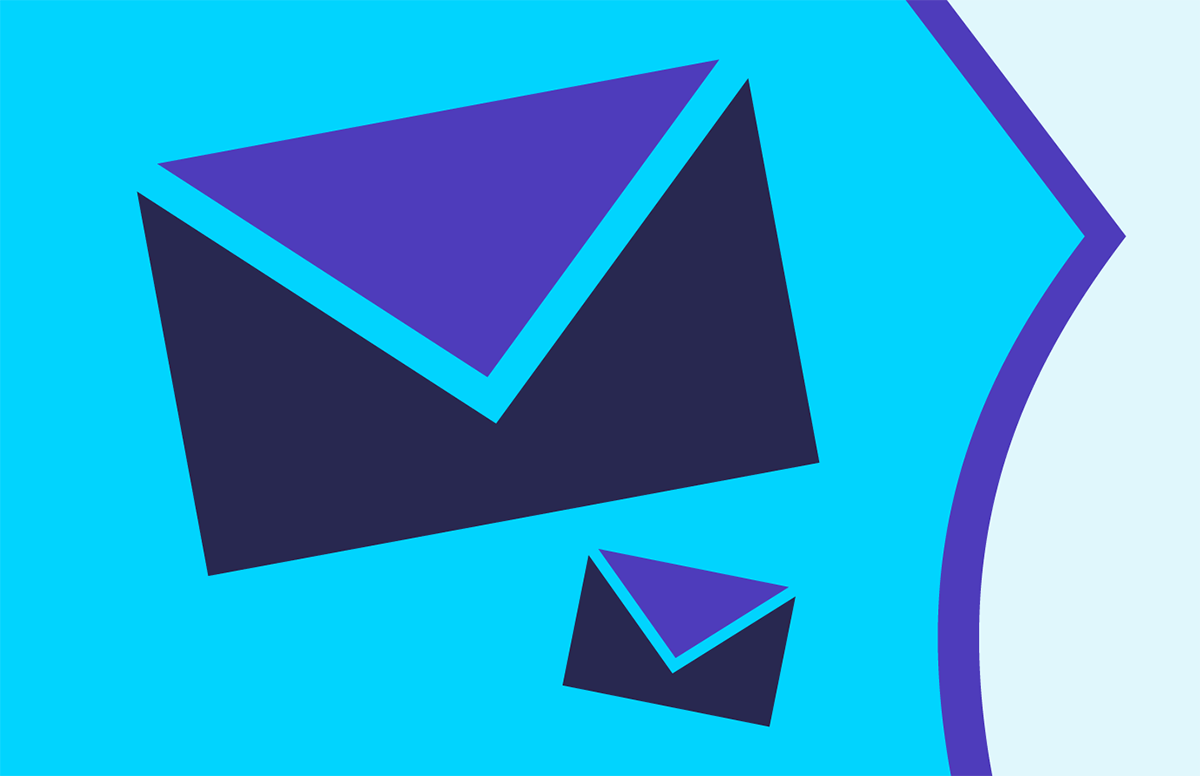Contact Data Enrichment: Automate Fresh, Accurate B2B Data
Contact data enrichment is your key to unlocking immense sales opportunities.
With fresh, accurate data, you can quickly reach decision-makers, personalise your outreach for maximum impact, drive your prospects to take action and fill your calendar with demos.
Keen to get started?
Read on for everything you need to know about the enrichment process 👇
What is data enrichment?
Data enrichment is the process of enhancing existing data by adding missing information. Enrichment typically relies on trustworthy third-party data sources to provide additional context to customer contact details or other relevant information.
You’ll find that Sales and marketing teams typically use data enrichment to improve the accuracy, completeness, and overall value of their B2B data.
Contact data enrichment vs data cleansing: What’s the difference?
Contact data enrichment is distinct from data cleansing. While both aim to improve data quality, they serve different purposes.
Let’s explore the differences:
Contact data enrichment
Contact data enrichment focuses on enhancing existing contact information by adding new, supplemental data.
Details like phone numbers, job titles, social media handles, or firmographic information are added to incomplete contact records. By incorporating these data points, contact data becomes more comprehensive and actionable.
Example:
Adding LinkedIn profiles, updated email addresses, or company revenue details to an existing B2B contact list.
Data cleansing
Data cleansing involves identifying and correcting errors, inaccuracies, or inconsistencies within a dataset.
This includes removing duplicates, correcting typos, standardising formats, and ensuring data validity.
Example:
Correcting misspelled email addresses, removing duplicate phone numbers, or standardising country codes for phone data.
What are the benefits of B2B data enrichment?
When data is collected—from website traffic, social media interactions, or email subscriptions—it often exists in a basic or incomplete form. To make this data more actionable, it’s essential to increase its accuracy by cleaning and verifying it and supplementing it with relevant updates from external sources.
With enriched prospect or lead data, you gain greater clarity on your target audience and its more granular characteristics. This, in turn, allows you to group them into relevant categories and reach out with personalised messages that resonate better.
Case in point:
B2B data is worth it.
Here’s what you can achieve with more accurate data:
Improved lead quality
Identify high-potential leads and focus your outreach on those most likely to need and appreciate your products. Enriching customer data with relevant information is the first step toward achieving higher open and response rates.
Better personalisation
Tailor your communication and offers to your prospects and increase the likelihood of meaningful engagement.
Enhanced segmentation
Create more granular audience segments, aligning your products and services more closely with customer needs.
Increased conversion rates
Optimise your sales strategies to improve the likelihood of converting leads into paying customers.
Streamlined marketing and sales processes
Automate aspects of data collection and reduce the time spent on manual research. This allows your B2B sales and marketing teams to focus on high-value activities.
Better customer retention
Gain deeper insights into your customers to improve service, boost retention, and build long-term relationships.
Improved data accuracy
Build high-quality and more reliable databases.
Take User Evidence, for example. They considered sales intelligence platforms like ZoomInfo, Lusha, and Apollo. Testing the enrichment capabilities of ZoomInfo and Cognism, they found that Cognism won hands down for data accuracy.
This led to a 33% increase in the pipeline!

“Cognism blew ZI out of the water. Cognism’s match rate was 98% vs. 72% by ZoomInfo, and we found that Cognism returned a ton more phone numbers.” “When we called them to verify the numbers, the call connect rate was 22% with Cognism and 14% with ZoomInfo.”
Competitive advantage
Access insights into competitor activities, market trends, and opportunities—give your business an edge.
Efficient decision-making
Use real-time market insights to make informed decisions across departments, from product development to pricing strategies.
Steps to automate contact data enrichment
Getting the hang of automating contact data enrichment is your ticket to all the advantages above.
Follow these steps to make lead enrichment easier and less time-consuming 👇
1. Define your data enrichment goals
Start by determining the type of data to enrich—identify which fields you want to enhance within your existing contact database. This might include:
Personal details:
Name, email address, phone number, social profiles, job title, etc.
Company information:
Company name, industry, size, revenue, location, etc.
Social data:
LinkedIn profile, Twitter handle, or other public social media identifiers.
Behavioural data:
Past engagement with marketing materials or product usage data.
2. Understand the purpose
Are you enriching data for sales prospecting, marketing campaigns, segmentation, or customer service?
The enrichment goals may vary depending on the department or function using the data.
Start by setting enrichment frequency and decide how often you want to enrich your data.
Your options here include:
Real-time enrichment:
Automatically enrich data when a contact is added or updated.
Batch updates:
Periodically enrich data at scheduled intervals (e.g., weekly, monthly).
On-demand enrichment:
Trigger enrichment only when specific actions occur, such as a customer interacting with your website.
3. Choose a data enrichment tool
When selecting a data enrichment tool, it’s important to prioritise data quality, accuracy, and integration capabilities.
The tool should:
- Provide comprehensive coverage of global and industry-specific data, real-time enrichment, and seamless integration with your CRM.
- Be easy to use, with automation features to streamline workflows and customisation options to meet your specific data needs.
- Compliance with data privacy regulations such as GDPR and CCPA is crucial to ensure legal adherence.
- The pricing structure should fit your business requirements and support scalability as your needs grow.
Cognism is an excellent choice.
Here’s why:
30 to 50% of CRM data is already out of date. Scheduled Enrich combats this by cleansing your CRM at set intervals, ensuring your data stays fresh and actionable.
Even better, Cognism Instant Enrich amplifies inbound lead response times, streamlines lead processing and optimises lead routing flows for your entire revenue team.
See how it works - take an interactive tour 👇
4. Connect your CRM
Data enrichment solutions integrate with CRMs and tools you’ll find in most sales tech stacks.
Some offer more integrations than others.
How to connect your CRM for easy contact data enrichment?
Let’s use Cognism as an example:
Cognism is renowned for its Salesforce integration. To connect the two tools, all you need to do is:
- Log in using your username or SSO.
- Go to Settings and connect Cognism with the tools you use. (i.e. for Salesforce data enrichment.)
- Start exporting data directly to your CRM or sales engagement tool.
Still unsure?
Here are two workflows explaining how to enrich leads using Cognism:
5. Automate data collection and enrichment
You can automate your company data enrichment process by setting up smart triggers.
These work in a few ways:
- New contact: When a new contact is added to your database (e.g., via a lead form, import, or marketing campaign), initiate enrichment to fill in the missing details.
- Updated contact: If a contact’s information has changed (such as a new company, job title, etc.), trigger enrichment to update their record with fresh data.
- Custom trigger: You can enrich data based on specific conditions, such as contacts who haven’t been engaged in the last six months or those who fit certain demographic criteria.
- Batch processing: You can run a batch process every night, enriching large numbers of contacts based on specific criteria (e.g., all contacts with missing company information).
-
Real-time processing: Use real-time enrichment for timely and up-to-date contact profiles. For example, if you send out personalised email campaigns, real-time enrichment ensures the email recipients’ data is as accurate as possible.
Another way to automate your data enrichment is to implement a DaaS solution. Through a cloud-based system, the service provides businesses with real-time enriched data via APIs (Application Programming Interfaces).
With DaaS, there’s no need to build or maintain complex data infrastructure; connect to the data you need and enhance your records immediately.

The DaaS model makes enrichment easy to access and integrate. Businesses can draw from multiple sources using a service-oriented architecture and seamlessly feed enriched data into their applications. User-friendly APIs ensure that retrieving and working with enriched information is straightforward, regardless of the sector.
Cognism’s DaaS for enrichment, for example, offers flexible delivery options to integrate B2B data in the format and frequency that suits you:
-
API & Flat File delivery: Real-time enrichment or scheduled batch drops via Snowflake, S3, Google Cloud, Databricks or SFTP.
-
Data quality & compliance: Audit-ready metadata and consent trails aligned with GDPR, CCPA and PECR.
-
Continuous value realisation: ROI benchmarking, usage health reviews and expansion planning.
6. Map enriched data to CRM fields
Ensure the data from your chosen data enrichment company is correctly mapped to the appropriate fields in your CRM or database.
For example, if the tool provides a company’s revenue or industry, confirm that this information populates the correct fields (e.g., “revenue” or “industry”) in your CRM.
Use CRM tools with dynamic field mapping capabilities to enrich data and automatically populate the relevant columns or properties.
7. Duplicate prevention
Set up duplicate detection rules to prevent adding multiple records for the same contact.
Cognism integrates seamlessly with Salesforce, leveraging Salesforce’s advanced deduplication capabilities. The system checks for existing records to avoid duplicates when exporting or syncing contacts, leads, or accounts from Cognism to Salesforce.
For example, leads are matched by email address or a combination of first name, last name, and city, while contacts are matched by email address or a combination of first name, last name, and company.
If a corresponding record exists, Cognism updates the existing Salesforce record based on your predefined update rules, thus eliminating the chance of duplicate entries.
8. Data quality control
Many organisations face the challenge of poor data quality. To combat this, you should periodically review the quality of your enriched data.
This is essential as not all enriched data may be 100% correct or relevant.
You can validate your data by cross-referencing it with multiple sources or verifying it through internal processes.
With regular cleansing, you keep the enriched data valuable in your CRM.
Darwinbox used Cognism to ensure data quality control for its database. This ensured a 10% increase in the overall database quality and helped them grow US target accounts to 4,000 while adding 15,000 US-based contacts to its database.

“We tested 5 industry players for match rate and the percentage of enrichment occurring.” “Overall, Cognism had the most accurate contact details, and for US data alone, it was easily greater than 90% accuracy on data quality.”
9. Monitor and optimise the process
Measure how effectively your enrichment tool enhances contact profiles. Track the completeness and accuracy of enriched data to identify trends or gaps in data quality.
If specific data fields underperform or fail to deliver accurate results, adjust your workflow by modifying data sources, updating triggers, or tweaking the frequency of enrichment.
For example, you could add new APIs or increase enrichment intervals.
In cases where enrichment fails (e.g., due to API limits or incorrect data), have a process in place to alert the team so issues can be addressed manually or retried.
10. Stay compliant with data privacy regulations
Ensure your data enrichment process complies with applicable data privacy laws, such as GDPR, CCPA, or industry-specific regulations.
This may involve obtaining consent from contacts for data collection and enrichment.
Provide contacts with the option to opt out of data enrichment if required by law. Confirm that all data collected, stored, and used is aligned with your privacy policy.
Winning examples of contact data enrichment
Let’s review a few examples where contact enrichment can be an effective tool for prospecting:
1. Hyper-personalised email campaigns
Database enrichment allows you to go beyond generic email blasts and create targeted, relevant content tailored to your prospects. The enriched data provides insights such as industry, job title, company size, and recent activities, which can be used to craft compelling messages.
Why it works:
Enriched data keeps your B2B emails relevant and makes recipients more likely to engage. Personalisation creates a sense of connection and trust, which leads to higher engagement and conversions.
2. Intelligent lead scoring for prioritisation
Account enrichment helps you build more accurate lead-scoring models by adding insights like company size, job title, purchasing history, and recent activities. This way, you focus on the most promising leads and get more email opens and responses.
Why it works:
Prioritising leads based on enriched data ensures sales teams spend time on contacts with the highest likelihood of conversion. As a result, you achieve higher close rates and faster sales cycles.
3. Real-time personalisation for customer engagement
Using real-time data enrichment, you can create immediate, personalised experiences, whether through chatbots, sales calls, or on-site interactions. Contact enrichment provides insights into who the customer is, their company, and their needs.
Why it works:
Personalisation in real-time demonstrates attentiveness and builds trust. When customers feel understood, they are more likely to engage, making your outreach highly effective.
But don’t take our word for it. CEC Marketing has seen amazing results using Cognism Enrich 👇

“I would 100% recommend Cognism. If you’re a company wanting to keep your data fresh and get new contacts, Cognism can help match specific companies to a hot list. They can compile lists, assess intent and enrich your existing prospects. It’s rare for data providers to offer this, which sets Cognism apart.”
What are some best practices for using enrichment software?
By leveraging enriched contacts, you can implement best practices that make your outreach precise, relevant, and impactful.
Let’s explore a few you can start using today 👇
1. Segmentation
Segmenting your audience involves dividing your contacts into smaller, more specific groups based on shared characteristics. Data enrichment helps you create highly targeted segments that align with your business objectives.
Here’s how contact enrichment enhances segmentation:
By industry
Identify industries where your product or service is most relevant.
For example, if you’re targeting tech companies, you can focus on contacts working at organisations categorised under “Information Technology.”
By company size
Group contacts based on the size of their organisation (e.g., small business, mid-market, or enterprise).
This is particularly useful for tailoring messaging to different organisational needs—smaller companies may prioritise cost-effective solutions, while larger ones may focus on scalability.
By job title
Create segments based on decision-making power or relevance to your product.
For instance, targeting “Marketing Managers” for lead generation tools or CIOs for IT solutions.
This is what Allego do using Cognism Enrich. Here’s how they do it:
“Firstly, the marketing team will upload the leads to Salesforce and allocate a set of leads to each SDR. The SDR will find the contact’s profile in LinkedIn Sales Navigator and use the Chrome Extension to generate their mobile numbers and email addresses. These will be used by marketing for nurture campaigns.”

“Cognism is at the essence of our inbound and outbound lead generation. Our sales performance would not be made possible without its excellent data.”
2. Lead scoring
Lead scoring is the process of ranking prospects based on their likelihood to convert into customers.
Contact data enrichment refines this process by adding relevant data points into your scoring model:
Company size
Leads from larger companies may be scored higher if your product is designed for enterprises.
Conversely, if your offering is geared toward startups, leads from smaller companies can receive a higher score.
Job title
Decision-makers or influencers (e.g., “Director of Operations” or “VP of Sales”) should be weighted more heavily than non-decision-makers.
Recent activity
Enriched data can capture behaviours like visiting your website, downloading a resource, or interacting with an email campaign.
This helps identify “hot leads” who are actively engaging with your brand.
3. Personalisation
Personalisation goes beyond addressing contacts by their first name. Marketing data enrichment enables deeper customisation of messaging and interactions, making your outreach feel more relevant and valuable.
Email content
Craft emails tailored to the recipient’s role or company needs.
For example, a “CTO” at a tech company might highlight your product’s technical capabilities, while a “Marketing Manager” might focus on lead generation benefits.
Sales outreach
Sales reps can reference specific data points in their outreach, such as a prospect’s recent promotion, the company’s expansion into a new market, or a challenge common to their industry.
Dynamic content
Use enriched data to populate fields dynamically in emails, landing pages, or ad campaigns.
For instance, “We understand [Company Name] is expanding its operations, and we’d love to discuss how our solution can support your growth.”
Test the top CRM enrichment solution
Increase your teams’ productivity by 20% with Cognism Enrich.
Here’s how:
- Keep your data fresh and actionable with instant and scheduled enrichment, ensuring complete profiles for reliable lead management.
- Boost lead accuracy and your reps’ speed to follow-ups with Instant Enrich – instant complete, accurate data.
- Solidify seamless sales routines and define clear ownership between reps with advanced lead-routing accuracy and account assignments.
- Maintain data health and prevent data decay with Scheduled Enrich – fresh and actionable contacts set to when and where you need it.
Ready to start booking more meetings with the right decision-makers? Book a demo by clicking the banner 👇


/csv%20enrichment/csv-enrichment-card.webp)
